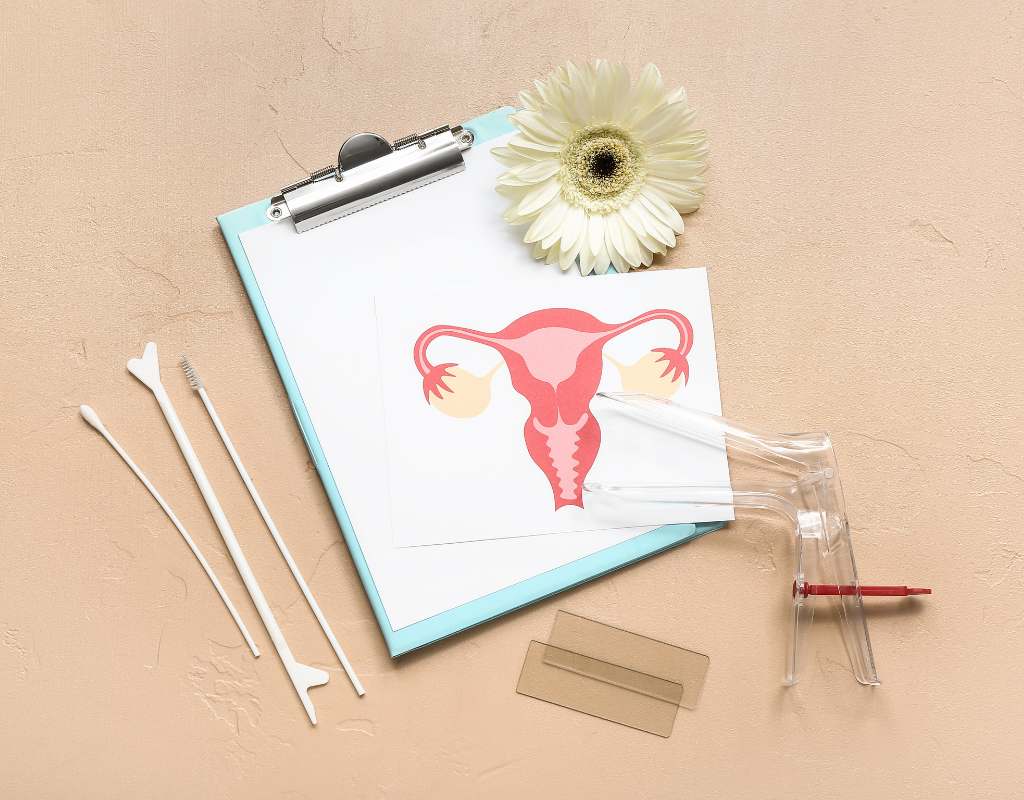Okay, cervical smear tests are a bit invasive and uncomfortable and it can be nerve-wracking waiting for the results. But there’s no escaping these facts: women who have regular cervical smear tests can reduce their chances of developing cervical cancer by up to 90%.
In New Zealand, women are advised to have a cervical smear test (also known as a pap smear) every five years. Cervical screening is recommended if you are:
- a woman or anyone with a cervix;
- aged between 25 and 69;
- sexually active or have ever been.
Free screening is available for women and people with a cervix who:
- are Māori or Pacific, any age
- are 30 years and have not had a test in the past 5 years or never had a screening test
- require follow-up testing (for any age)
- hold a Community Services Card (for anny age).
Smear tests help prevent cervical cancer
Cervical cancer is one of the most preventable and curable of all cancers. According to the NZ Ministry of Health, mortality from cervical cancer has dropped by nearly two-thirds since the introduction of the national screening programme.
With regular screening, abnormal cells can be found and treated early, before they become cancer.
New Zealand’s National Cervical Screening Programme offers regular screening (usually every five years). Cervical screening looks for the human papillomavirus (HPV) that causes most cervical cancers. By having regular screening and being immunised against HPV, you can help to protect yourself against cervical cancer.
Two screening options
In late 2023, HPV screening became the new method for cervical screening in Aotearoa New Zealand. HPV testing looks for the human papillomavirus (HPV), which causes cell changes that may lead to cervical cancer.
This change means that there are now two options for how your screening sample is obtained.
Vaginal swab
The vaginal swab testing can be quick and easy for a less-invasive option. You can either self-test, or your health professional can help. This may not be suitable for everyone depending on your screening history. Your health professional will be able to advise you and may recommend that you have a cervical cell sample taken. Some people may also prefer to have their sample taken as a cervical sample.
Cervical sample
A cervical sample (previously known as a smear test) is taken by a health professional. A cervical sample also tests for HPV. You may prefer to have a cervical sample test instead of a vaginal swab.
The procedure is quite quick but, yes, it does require inserting a speculum into the vagina to allow the person doing the test to see the area of the cervix where they need to sample the cells.
The cells are gained by rotating a sampling spatula or brush over the cervix. You may feel some dull pressure while this is being done. While some women can feel a little embarrassed by the procedure , it’s worth remembering the for the person doing the test, it’s part of their everyday work.
What if it hurts?
While a cervical sample test can be uncomfortable, it should not hurt. There are various ways to make the procedure more comfortable.
Some women find using relaxation techniques like deep breathing, guided visualisation or meditation useful. If you’ve had problems in the past, talk to the practitioner about your difficulties and discuss what may make the process more comfortable for you.
Each woman is the best expert on her own body, and any information you can share with the test provider will help them in making the experience more comfortable for you. Factors that may make the procedure more uncomfortable include:
- vaginal dryness, particularly in post-menopausal women
- anxiety, which can cause tensing of the muscles
- a retroverted (tilting backwards or upwards) uterus, which can make the cervix difficult to reach if a woman is lying in a particular position.
Worried about the results of your test?
If you do a vaginal swab test and HPV is found, you may be required to have the cervical sample as a follow-up test, or referred directly for further investigation.
While about one in 10 smear results will come back with a comment attached or an indication of a problem, this doesn’t necessarily mean cancer. It just means that something requires a re-check or some action.
According to the NZ Ministry of Health information site, Time to screen, results may include:
Normal Results
No atypical or abnormal changes were detected.
Unsatisfactory results
Unsatisfactory results mean that the test could not be read at the laboratory because not enough cells were on the slide, or blood or mucus hid most of the cells. In this case, you will need to have another smear within three months.
Inflammation or infection
Occasionally your smear may show that inflammation or infection is present. Discuss this result with your smear taker or doctor. Often no treatment is required.
Atypical changes
These changes are borderline between normal and abnormal. They are called atypical squamous cells of undetermined significance (ASC-US).
Mild (low-grade) changes
These mildly abnormal cells are called low-grade squamous intraepithelial lesions (LSIL). This means changes in the surface cells of the cervix. LSIL is the lowest grade of change. If have atypical or mild (low-grade) changes, your smear taker may advise you to have another smear in 6-12 months. Quite often, the next smear will be normal. You may be referred to see a specialist (colposcopist). If you are over 30 years old, your smear taker may recommend you have an HPV test.
Moderate to severe (high-grade) changes
These more serious abnormal cell changes are called high-grade squamous intraepithelial lesions (HSIL). In some women, they may develop into cancer if they are not treated. You will be referred for colposcopy. It is important that you attend your colposcopy appointment. Your smear taker will discuss with you having an HPV test, if you have had a high grade result.
Glandular cell changes or adenocarcinoma-in-situ (AIS)
Although the cervical smear test is not designed to detect glandular cell changes, such changes are sometimes found. You will be referred for a colposcopy, and it is important for you to go to your appointment.
Cancer
If your smear test shows any changes suggestive of cervical cancer, you will be referred to a specialist. The sooner this is treated, the better the chances of success. It’s important for you to go to your appointment.
Doctor’s tips
Jean Hailes GP, Dr Amanda Newman, says no matter how long it’s been between smears, it’s “better late than never”. She says doctors are not there to judge you or reprimand you for not maintaining a regular schedule.
“Just make having a pap smear your top priority today. It’s one of those great tests because it’s simple and so highly effective at detecting even the smallest changes within cells on the cervix,” she says.
Dr Newman says the smear is also a great chance to book in a full health check with your doctor or nurse. “Just make sure you schedule a double appointment,” she advises.
Related women’s health articles
This article was written by Fiona Baker and edited for Kidspot New Zealand. Sources include The Jean Hailes Foundation for Women’s Health and Time To Screen (NZ Ministry of Health)
This article contains general information only and is not intended to replace advice from a qualified health professional.
Updated February 2024







Leave A Comment
You must be logged in to post a comment.